Military of New France on:
[Wikipedia]
[Google]
[Amazon]
 The military of New France consisted of a mix of regular soldiers from the French Army (
The military of New France consisted of a mix of regular soldiers from the French Army (
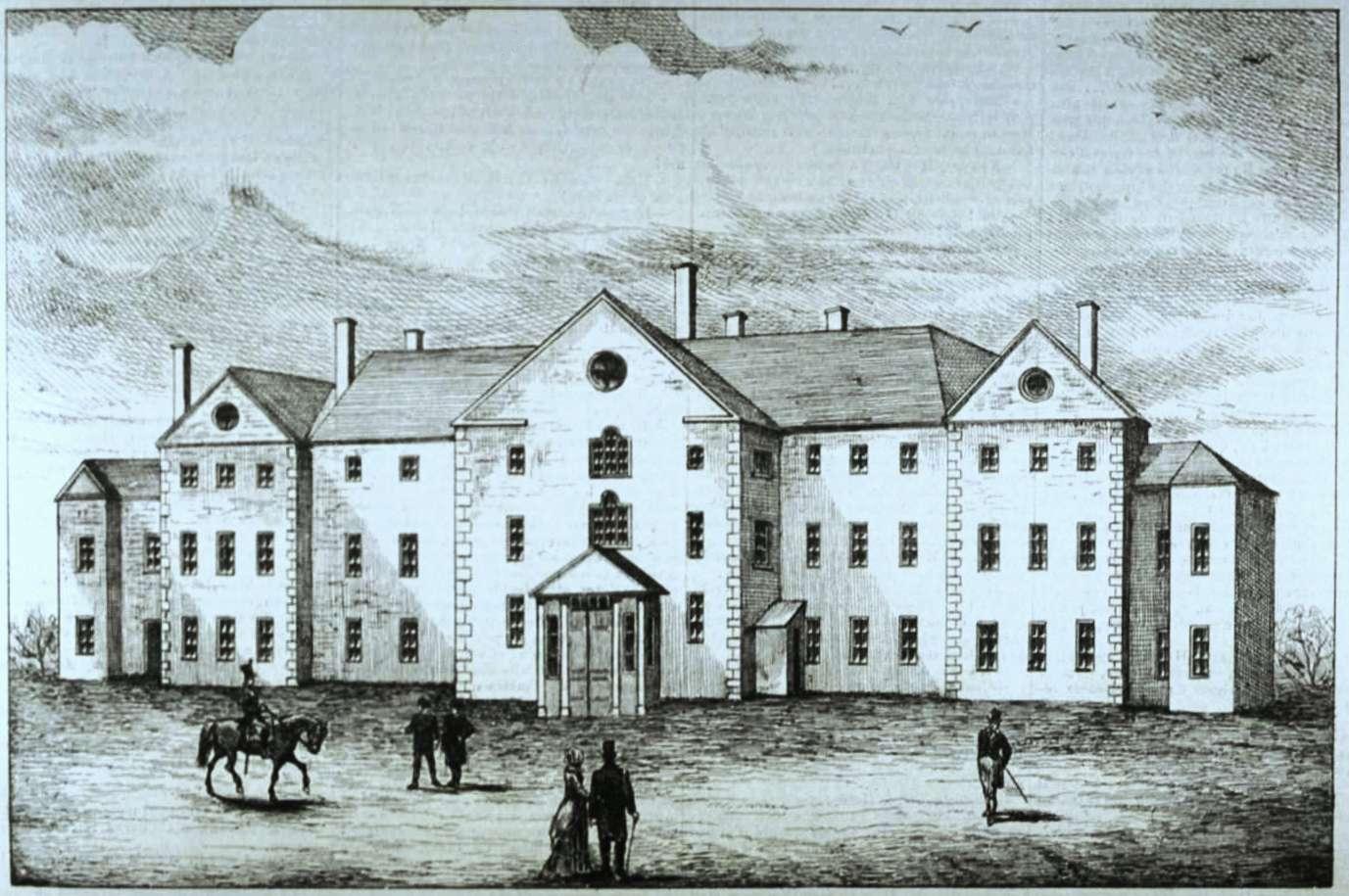 The French and Canadiens built forts from Newfoundland to Louisiana and others captured from the British from the 1600s to the late 1700s. Some were a mix of military post and trading forts.
*
The French and Canadiens built forts from Newfoundland to Louisiana and others captured from the British from the 1600s to the late 1700s. Some were a mix of military post and trading forts.
* 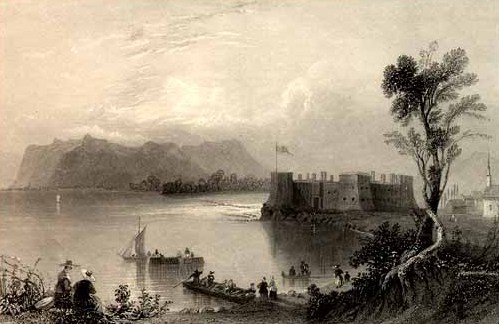 *
* 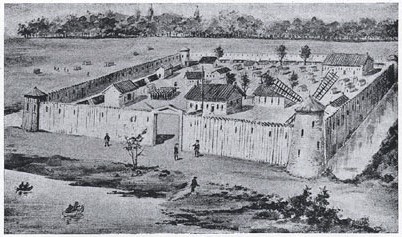 * Fort La Reine 1738-?
*
* Fort La Reine 1738-?
*  *
* 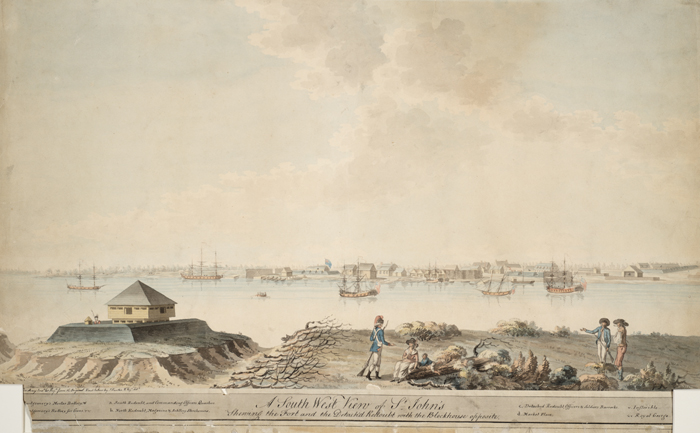 * Fort Saint Joseph 1691-1795
* Fort Saint Nicholas 1685-
*
* Fort Saint Joseph 1691-1795
* Fort Saint Nicholas 1685-
*


 *
*
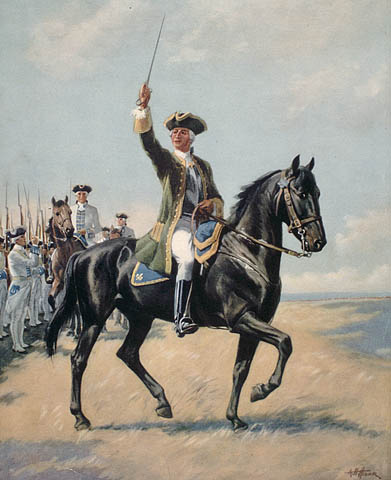 *
*
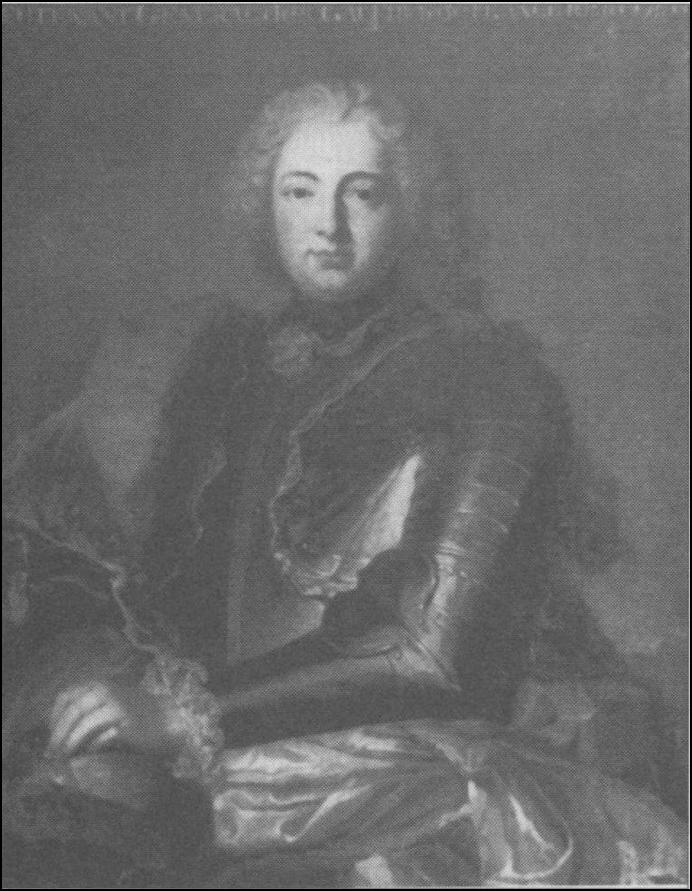 *
*  * Dauphin Royal 74-guns
* ''Diadème'' 74-guns
* Duc de Bourgogne 74-guns
* Fantasque 64-guns
* Formidable 80-guns
* Héros 74-guns
* Le Machault 32-guns
*
* Dauphin Royal 74-guns
* ''Diadème'' 74-guns
* Duc de Bourgogne 74-guns
* Fantasque 64-guns
* Formidable 80-guns
* Héros 74-guns
* Le Machault 32-guns
*
 The military of New France consisted of a mix of regular soldiers from the French Army (
The military of New France consisted of a mix of regular soldiers from the French Army (Carignan-Salières Regiment
The Carignan-Salières Regiment was a Piedmont French military unit formed by merging two other regiments in 1659. They were led by the new Governor, Daniel de Rémy de Courcelles, and Lieutenant-General Alexandre de Prouville, Sieur de Tracy. A ...
) and French Navy ( Troupes de la marine, later Compagnies Franches de la Marine) supported by small local volunteer militia units (Colonial militia
Colonial troops or colonial army refers to various military units recruited from, or used as garrison troops in, colonial territories.
Colonial background
Such colonies may lie overseas or in areas dominated by neighbouring land powers such ...
). Most early troops were sent from France, but localization after the growth of the colony meant that, by the 1690s, many were volunteers from the settlers of New France, and by the 1750s most troops were descendants of the original French inhabitants. Additionally, many of the early troops and officers who were born in France remained in the colony after their service ended, contributing to generational service and a military elite. The French built a series of forts from Newfoundland to Louisiana and others captured from the British during the 1600s to the late 1700s. Some were a mix of military posts and trading forts.
Military strategy
The soldiers of New France were either exceptionally well trained and very apt to the challenges of the colonial frontier, or they were dangerously inept. Most of the military consisted of habitant militia rather than actual French soldiers. Upon their arrival, the soldiers of New France learned quickly that the traditional military techniques seen on the battlefields of Europe were not at all effective in the New World. The Iroquois attacks on the French forced them to adapt to their current situation. Luckily the French were experts on forging alliances with the Native people and with the help from their allies the French adopted what they called "la petite guerre". This was essentially small-scale guerrilla warfare that allowed the French to harass and cripple targets slowly over time rather than engage in battle after battle, something that New France could not afford. The strategy consisted mostly of stealth and surprise attacks whose purpose lay in creating ambushes and raids, followed by immediate withdrawals from the battlefield. This strategy focused on the elimination of small groups of targets rather than capturing targets of strategic value.Horn, Bernd. The Canadian Way of War: Serving the National Interest. Toronto, ON, CAN: Dundurn Group, 2006. This style of warfare was not only well suited to the North American wilderness but it also allowed the French troops to be at a vast numerical disadvantage (outnumbered sometimes 20 to 1) and still effectively retaliate against their enemies, primarily the British.Nester, William R. The French And Indian War And The Conquest Of New France. Norman: University of Oklahoma Press, 2014. pp. 1–7 Ironically, the fact that most of the soldiers were in fact habitant militia men actually aided in the ability to fight using these strategies given that many of these men would have been hunters and would already be accustomed to hunting and stalking in forests.Indigenous relations
Indigenous allies
It was the job of the military to maintain good relations with frontier Indigenous North Americans in order to preserve French interests in the colony. In fact, preserving a positive relationship between the French and Native Peoples was the most important of the duties that were given to the military. Throughout the years the French developed ties with several Native tribes, those allies consisted mainly of the Abenakis, Algonquin, Huron, Montagnais, and Outaouais and through their partnership they taught the French much more than just military strategy. They taught them how to hunt, fish and dress their catches and they taught them how to navigate and essentially survive in the unforgiving Canadian wilderness. The French soldiers relied heavily on the Native warriors but their allegiance came at a cost. The Natives were "self interested and attached themselves only to the one who gives them the most… and if they failed to be rewarded one single time, the good that was done for them before counts for nothing". In addition, the Natives as tribes provided knowledge of the wilderness but the tribes themselves were not active in their wars as a whole. Native warriors participated in the French battles if they chose to do so usually under the arrangement that they would be compensated for their participation. Falling short on these agreements sometimes caused great discourse amongst the Natives and sometimes damaged French-Native relationships.Decadence amongst the soldiers
Part of the job of the military was to create good trade relations with the Natives. New France relied heavily on the fur trade given that it was the only valuable commodity in the entire colony, which cost more to operate than it brought in, in profit.Nester, William R. The French And Indian War And The Conquest Of New France. Norman: University of Oklahoma Press, 2014. However, much of the military hierarchy was not based on merit but rather on internal family connections, which allowed unqualified young ambitious and greedy men to take positions of high rank. This resulted in many soldiers leaving their post for weeks at a time in order to illegally trade with the Natives. The Natives had an understanding of how the trading system worked and considered the military as "trading-goods chiefs"Charles de Raymond. and Joseph L. Peyser. and Joseph L. Peyser. On the eve of conquest: the Chevalier de Raymond's critique of New France in 1754 . East Lansing: Michigan State University Press, 1997. and because of their dereliction of duty came to recognize many soldiers as dishonest people who went against their code. In addition there were even times where the presents the king would send to keep friendly relations with the Natives were often taken and sold to them for profit instead, the only presents they would give them would be mere trinkets. Therefore, the lack of discipline amongst some of the higher ups resulted in losing face amidst the natives and subsequently losing some of their business and their allegiance to the English.Installations
 The French and Canadiens built forts from Newfoundland to Louisiana and others captured from the British from the 1600s to the late 1700s. Some were a mix of military post and trading forts.
*
The French and Canadiens built forts from Newfoundland to Louisiana and others captured from the British from the 1600s to the late 1700s. Some were a mix of military post and trading forts.
* Chateau St. Louis
The Chateau St. Louis (french: Château Saint-Louis) in Quebec City was the official residence of the French Governor of New France and later the British Governor of Quebec, the Governor-General of British North America, and the Lieutenant-Gov ...
- built 1648 with 16 redoubts; rebuilt and finally destroyed by fire 1834
* Citadelle of Quebec
The Citadelle of Quebec (french: Citadelle de Québec), also known as ''La Citadelle'', is an active military installation and the secondary official residence of both the Canadian monarch and the governor general of Canada. It is located atop C ...
1673-1872
* The Citadel, Montreal 1690-1821
* Fortress of Louisbourg
The Fortress of Louisbourg (french: Forteresse de Louisbourg) is a National Historic Site and the location of a one-quarter partial reconstruction of an 18th-century French fortress at Louisbourg on Cape Breton Island, Nova Scotia. Its two siege ...
, Louisbourg, (Ile Royale) Acadie 1720-1758 - destroyed in 1760 and partially rebuilt in the 1960s as a historic museum
* Port Royal
Port Royal is a village located at the end of the Palisadoes, at the mouth of Kingston Harbour, in southeastern Jamaica. Founded in 1494 by the Spanish, it was once the largest city in the Caribbean, functioning as the centre of shipping and ...
, Port Royale, Acadie 1605-1613
* Fort Anne
Fort Anne (first established in 1629 as the Scottish Charles Fort) is a four-bastion fort built to protect the harbour of Annapolis Royal, Nova Scotia. The fort repelled all French attacks during the early stages of King George's War.
Now desig ...
1636-1713
* Fort Beauharnois
Fort Beauharnois was a French fort, serving as a fur trading post and Catholic mission, built on the shores of Lake Pepin, a wide section of the upper Mississippi River, in 1727. The location chosen was on lowlands and the fort was rebuilt in 1 ...
1727-
* Fort Beauséjour
Fort Beauséjour (), renamed Fort Cumberland in 1755, is a large, five-bastioned fort on the Isthmus of Chignecto in eastern Canada, a neck of land connecting the present-day province of New Brunswick with that of Nova Scotia. The site was strateg ...
1751-1835
* Fort Boishebert
Fort Boishébert (originally known as Fort Nerepis) is a National Historic Site at Woodmans Point outside the Town of Grand Bay–Westfield, Kings County, New Brunswick, Canada. Located at the confluence of the Saint John River and Nerepis riv ...
before 1696 to 1751
* Fort Bon Secours 1685-
* Fort Bourbon
Fort Bourbon was one of the forts built by La Vérendrye during his expansion of trade and exploration west from Lake Superior. Besides providing support for the important fur trade in what is now Manitoba, La Vérendrye wanted to conduct explorat ...
1684 (by British); captured 1692 and captured by French several times and returned 1713
 *
* Fort Carillon
Fort Carillon, presently known as Fort Ticonderoga, was constructed by Pierre de Rigaud de Vaudreuil, Governor of French Canada, to protect Lake Champlain from a British invasion. Situated on the lake some south of Fort Saint Frédéric, it ...
1755-1759
* Fort Chambly
Fort Chambly is a historic fort in La Vallée-du-Richelieu Regional County Municipality, Quebec. It is designated as a National Historic Site of Canada. Fort Chambly was formerly known as Fort St. Louis. It was part of a series of five fortificat ...
1675-1776
* Fort Champlain
A fortification is a military construction or building designed for the defense of territories in warfare, and is also used to establish rule in a region during peacetime. The term is derived from Latin ''fortis'' ("strong") and ''face ...
* Fort-Coulonge
Fort Coulonge is a village in the Pontiac Regional County Municipality in western Quebec, Canada, at the mouth of the Coulonge River. It is the francophone centre of the otherwise largely (57%) anglophone Pontiac MRC, with 79.6% listing Frenc ...
* Fort Crevier
Fort Crevier is a French fort built near the Saint-François River in Quebec.
In 1687, near Saint-François-du-Lac, the fort was built by Jean Crevier de Saint-François. It was also known as Fort Saint-François. The fort's purpose was to def ...
1687-1701
* Fort Dauphin (Manitoba) 1741-?
*Fort de Chartres
Fort de Chartres was a French fortification first built in 1720 on the east bank of the Mississippi River in present-day Illinois. It was used as the administrative center for the province, which was part of New France. Due generally to river floo ...
* Fort de la Montagne, Mont-Royal
Mount Royal (french: Mont-Royal, officially Town of Mount Royal, french: Ville de Mont-Royal, abbreviated TMR, french: VMR) is an affluent on-island suburban town located on the northwest side of the eponymous Mount Royal, northwest of Downtown M ...
1685 - Quebec and home to Governor; mostly destroyed by fire of 1854
* Fort du Sault Saint-Louis 1725
* Fort Douville 1720-1730
* Fort Duquesne
Fort Duquesne (, ; originally called ''Fort Du Quesne'') was a fort established by the French in 1754, at the confluence of the Allegheny and Monongahela rivers. It was later taken over by the British, and later the Americans, and developed a ...
1754-1758
* Fort Frontenac
Fort Frontenac was a French trading post and military fort built in July 1673 at the mouth of the Cataraqui River where the St. Lawrence River leaves Lake Ontario (at what is now the western end of the La Salle Causeway), in a location traditiona ...
Fortenac 1673-1758; rebuilt 1783
* Fort Gaspareaux 1751-1756
* Fort Kaministiquia
* Fort La Baye
Fort La Baye was a French military post at La Baye (today Green Bay, Wisconsin), originally built in 1684, remodeled in 1717, and occupied until 1760.
One Commandant of the Fort was the famous Chevalier Jacques Testard de Montigny, Knight of the ...
1717-1760
* Fort La Biche 1753-1757
 * Fort La Reine 1738-?
*
* Fort La Reine 1738-?
* Fort Le Boeuf
Fort Le Bœuf (often referred to as Fort de la Rivière au Bœuf) was a fort established by the French during 1753 on a fork of French Creek (in the drainage area of the River Ohio), in present-day Waterford, in northwest Pennsylvania. The fort ...
1753-1763
* Fort Lachine
A fortification is a military construction or building designed for the defense of territories in warfare, and is also used to establish rule in a region during peacetime. The term is derived from Latin ''fortis'' ("strong") and ''facere' ...
(Fort Rémy), Lachine 1672-1873 and site of Lachine massacre
The Lachine massacre, part of the Beaver Wars, occurred when 1,500 Mohawk warriors launched a surprise attack against the small (375 inhabitants) settlement of Lachine, New France, at the upper end of Montreal Island, on the morning of August 5, ...
; abandoned 1825 and destroyed 1873
* Fort de la Corne 1753-?
* Fort La Jonquière
Fort La Jonquière was a French fort built along the Saskatchewan River in the spring of 1751. It was purported to have been the furthest west outpost of New France. The fort was named after the Governor General of New France at the time, Jacque ...
1751-?
* Fort La Pointe 1693-1759
* Fort Laprairie
Fort Laprairie was constructed in 1687, and served as a military fort in New France until 1713. The fort was attacked by Major Peter Schuyler on August 11, 1691, but resisted to the invaders. The British and Dutch colonists were commanded by Ma ...
, Laprairie 1687-1713; site of the Battle of La Prairie
The Battle of La Prairie was an attack made on the French colonial settlement of La Prairie, New France on August 11, 1691 by an English, Mohawk and Mohican force coming north from Albany, New York. The force, led by Major Pieter Schuyler, init ...
1691
* Fort La Reine 1738-1852
* Fort Le Sueur 1695-
* Fort Machault
Fort Machault (, ) was a fort built by the French in 1754 near the confluence of French Creek with the Allegheny River, in northwest Pennsylvania. (Present-day Franklin developed here later.) The fort helped the French control these waterway ...
1754-1763
* Fort Maurepas 1734-
* Fort Menagoueche 1751-1755
* Fort Miami 1679-1680
* Fort des Miamis
Fort Miami, originally called Fort St. Philippe or Fort des Miamis, was the name of a pair of French palisade forts built at Kekionga, the principal village of the Miami. It was situated where the St. Joseph River and St. Marys River merge to ...
1702-1760
* Fort Michilimackinac 1715-1780
* Fort Michipicoton 1725-1904
Fort Nashwaak
Fort Nashwaak (also known as Fort Naxoat, Fort St. Joseph) was the capital of Acadia and is now a National Historic Site of Canada in present-day Fredericton, New Brunswick, Canada. It was located strategically up the Saint John River and clos ...
1692-1700
* Fort Niagara
Fort Niagara is a fortification originally built by New France to protect its interests in North America, specifically control of access between the Niagara River and Lake Ontario, the easternmost of the Great Lakes. The fort is on the river's e ...
1726-
* Fort Ouiatenon 1717-1791
* Fort Paskoya 1741-
* Fort Pentagouet
Fort Pentagouët (Fort Pentagoet, Fort Castine, Fort Penobscot, Fort Saint-Pierre) was a French fort established in present-day Castine, Maine, which was the capital of Acadia (1670–1674). It is the oldest permanent settlement in New England.
I ...
1613-1674
* Fort Pimiteoui1691-1812
* Fort Pontchartrain du Détroit
Fort Pontchartrain du Détroit or Fort Detroit (1701–1796) was a fort established on the north bank of the Detroit River by the French officer Antoine de la Mothe Cadillac and the Italian Alphonse de Tonty in 1701. In the 18th century, Fre ...
1701-1796
* Fort Presque Isle
Fort Presque Isle (also Fort de la Presqu'île) was a fort built by French soldiers in summer 1753 along Presque Isle Bay at present-day Erie, Pennsylvania, to protect the northern terminus of the Venango Path. It was the first of the French p ...
1753-1852
* Fort Richelieu
Fort Richelieu is a historic fort in La Vallée-du-Richelieu Regional County Municipality, Quebec, Canada. The fort is designated as a National Historic Site of Canada. Fort Richelieu was part of a series of five forts built along the Richelieu R ...
1665-?
* Fort Royal (Plaisance) Fort Royal is a French fort built in 1687 on the island of Newfoundland during the time of New France.
In 1662, the French established a commercial counter on a well protected hill overlooking Placentia Bay which separates the Avalon Peninsula form ...
1687-1713
* Fort Rouge 1738-1741
* Fort Sainte Anne 1686-1693
* Fort Saint Antoine Fort Saint Antoine was a French fort on Lake Pepin in present-day Wisconsin founded in 1686 by explorer and fur trader Nicholas Perrot and his expedition of Canadiens. They had come to the region to begin trading with Native American tribes of the ...
1686-1731
* Fort Saint Charles
Fort Saint Charles (1732) on Lake of the Woods was the second post built by La Vérendrye during his expansion of trade and exploration west of Lake Superior. It was located on Magnuson's Island on the Northwest Angle of Minnesota, 3.5 miles eas ...
1732-
* Fort Sainte Croix 1683-
* Fort Saint Jacques
Fort Saint Jacques, Fort Rupert, or Fort Charles was a fur trading post on James Bay at the mouth of the Rupert River. It was located in what is now Waskaganish, Nord-du-Québec region, Quebec, Canada.
Fort Charles was founded in 1668 in northe ...
1686-1713
* Fort Saint Jean, La Vallée-du-Richelieu 1666 - destroyed 1760 and rebuilt by British in 1775 and had small shipyard
 * Fort Saint Joseph 1691-1795
* Fort Saint Nicholas 1685-
*
* Fort Saint Joseph 1691-1795
* Fort Saint Nicholas 1685-
* Fort Saint Pierre
Fort Saint Pierre on Rainy Lake was the first French fort built west of Lake Superior. It was the first of eight forts built during the elder Vérendrye's expansion of trade and exploration westward from the Great Lakes.
History
In 1688 Jacque ...
1731-1812?
* Fort Sandoské
Fort Sandoské was a French military fort, built about 1750 on what is now called the Marblehead Peninsula on the northern side of Sandusky Bay in Ohio, near the traditional portage place from the bay to Lake Erie.
It was built at a site former ...
1747-1763
* Fort Senneville
Fort Senneville is one of the outlying forts of Montreal, Quebec, Canada, built by the Canadiens of New France near the Sainte-Anne-de-Bellevue in 1671. The property was part of a fief ceded to Dugué de Boisbriant in 1672 by the Sulpicians. A l ...
1671-1691; 1692-1776
* Fort Tourette 1683-1763
* Fort Trempealeau Fort Trempealeau was founded in 1685 by Nicholas Perrot and a groupe of Canadiens. In the fall of 1685, Perrot and his men arrived at Mont Trempealeau by canoe. The Winnebagos called this mountain, ''Hay-nee-ah-cheh'', or the mountain in the wat ...
1685-1731
* Fort Verchères 1672-
* Fort Vincennes
During the 18th and early 19th centuries, the French, British and U.S. forces built and occupied a number of forts at Vincennes, Indiana. These outposts commanded a strategic position on the Wabash River. The names of the installations were change ...
1731-1766
* Fort Ville-Marie
Fort Ville-Marie was a French fortress and settlement established in May 1642 by a company of French settlers, led by Paul de Chomedey de Maisonneuve, on the Island of Montreal in the Saint Lawrence River at the confluence of the Ottawa River, i ...
1642-74; demolished 1688
Units

 *
*French Army
History
Early history
The first permanent army, paid with regular wages, instead of feudal levies, was established under Charles VII of France, Charles VII in the 1420 to 1430s. The Kings of France needed reliable troops during and after the ...
** Carignan-Salières Regiment
The Carignan-Salières Regiment was a Piedmont French military unit formed by merging two other regiments in 1659. They were led by the new Governor, Daniel de Rémy de Courcelles, and Lieutenant-General Alexandre de Prouville, Sieur de Tracy. A ...
(Régiment de Carignan-Salières) - volunteer army unit (1665–1668)
*** François Cottineau, dit Champlaurier, a member of this unit and ancestor of PM Sir Wilfrid Laurier
Sir Henri Charles Wilfrid Laurier, ( ; ; November 20, 1841 – February 17, 1919) was a Canadian lawyer, statesman, and politician who served as the seventh prime minister of Canada from 1896 to 1911. The first French Canadian prime minist ...
*** 176 soldiers and 4 officers 1740s
** Canadian Voyageurs
Canadians (french: Canadiens) are people identified with the country of Canada. This connection may be residential, legal, historical or cultural. For most Canadians, many (or all) of these connections exist and are collectively the source o ...
- militia unit
** militia artillery corps (2 brigades) - 1723
** Reserve companies (2 units) - 1750s
** The Governor General's Guard 1672-1682 - 20 mounted men-at-arms or carabineers for Comte de Frontenac
** Compagnie des canonniers-bombardiers de Quebec (Gunner and Bombardier Company) 1750-1760 - consisted of 43 gunners/bombers
** Régiment de la Reine
The Régiment de la Reine (''Queen's Regiment'') was a French Army infantry regiment active in the 17th and 18th centuries. It is principally known for its role in the Seven Years' War, when it served in the North American theatre.
Early histo ...
1755-1760
** Régiment de Guyenne 1755-1760
** Régiment de Berry 1755-1760
** Régiment de Béarn 1755-1760
** Régiment La Sarre 1755-1760
** Régiment Royal Roussillon 1755-1760
** Régiment de Languedoc
The Régiment de Languedoc was a French Army regiment active in the 18th century. It is principally known for its role in the Seven Years' War, when it served in the North American theatre.
History
The regiment arrived in Quebec City June 19, ...
1755-1760
** Régiment de Bourgogne
The Bourgogne Regiment was a French Royal Army regiment established in 1665 and disbanded in 1791. Formed by Ancien Régime officials on 7 December 1665 as one of 37 new line infantry regiments created in response to King Philip IV of Spain's dea ...
1755-1760
** Régiment d'Artois
The Régiment Artois was a French Army regiment active during the late 17th century and 18th century. It is principally known for its role in the Seven Years' War, when it served in the North American theatre.
History
The regiment arrived in Ne ...
1755-1760 - 520 soldiers
** Régiment de Cambis 1758 - 680 soldiers
*** 2 companies
** Marechaussee - police unit
*French Navy
The French Navy (french: Marine nationale, lit=National Navy), informally , is the maritime arm of the French Armed Forces and one of the five military service branches of France. It is among the largest and most powerful naval forces in t ...
** Régiment suisse de Karrer
A regiment is a military unit. Its role and size varies markedly, depending on the country, service and/or a specialisation.
In Medieval Europe, the term "regiment" denoted any large body of front-line soldiers, recruited or conscripted ...
1722-1745 (Louisbourg); 1747-1749 (Quebec)
** 28 Compagnies franches de la Marine of Canada 1683-1755
*** 30 companies 1750s with 1500 soldiers and 120 officers
** Compagnies franches de la Marine of Acadia
*** 4 companies with 200 soldiers and 12 officers by 1702
** Compagnies franches de la Marine of Plaisance
*** 3 companies with 150 soldiers and 9 officers by the 1690s
** Compagnies franches de la Marine on Ile Royale 1710s
*** 24 companies with 1200 soldiers and 96 officers by 1749
** Bombardiers de la Marine (Navy Bombardiers) 1702-1760s - 108 bombardiers
** Troupes de la marine (Troops of Marines) 1682-1755 - 1759 - 1000 soldiers
** Galley Troops (Pertuisaniers des Galères)
* Canadian Militia
** District of Québec: 1759 - 5,640 militiamen
** District of Montréal: 1759 - 5,455 militiamen 4,200 sent to Quebec City
** District of Trois-Rivière: 1759 - 1,300 militiamen 1,100 to Quebec City
** Canadian Cavalry: 200 cavalrymen
*Acadian Militia
The military history of the Acadians consisted primarily of militias made up of Acadian settlers who participated in wars against the English (the British after 1707) in coordination with the Wabanaki Confederacy (particularly the Mi'kmaw mili ...
1759 - 150 militiamen
* Native Indians 1759 - 1,800
Military commanders
 *
* Louis-Joseph de Montcalm
Louis-Joseph de Montcalm-Grozon, Marquis de Montcalm de Saint-Veran (28 February 1712 – 14 September 1759) was a French soldier best known as the commander of the forces in North America during the Seven Years' War (whose North American th ...
* Chevalier de Lévis
* Louis Antoine de Bougainville
Louis-Antoine, Comte de Bougainville (, , ; 12 November 1729 – August 1811) was a French admiral and explorer. A contemporary of the British explorer James Cook, he took part in the Seven Years' War in North America and the American Revolutio ...
* François-Charles de Bourlamaque
François-Charles de Bourlamaque (the surname can also be seen as Burlamaqui) (1716 – 1764) was a French military leader and Governor of Guadeloupe from 1763.
Biography
His father Francesco Burlamacchi was born in Lucca, Tuscany. He began as ...
* Claude-Pierre Pécaudy de Contrecœur Claude-Pierre Pécaudy de Contrecœur was an officer in the colonial regular troops ( troupes de la marine), seigneur, and member of the Legislative Council of New France. Born on December 28, 1705 at Contrecœur, Quebec, son of Francois-Antoine P� ...
* Marquis de Denonville
* Jean-Daniel Dumas
Jean-Daniel Dumas (24 February 1721 – 2 August 1794) was a French officer in the Seven Years' War. The French and Indians launched an attack on General Edward Braddock's column at the Battle of the Monongahela. Dumas and Charles Michel de Lang ...
* Daniel Liénard de Beaujeu
Daniel Hyacinthe Liénard de Beaujeu (9 or 19 August 1711 – 9 July 1755) was a French officer during King George's War and the French and Indian War. He participated in the Battle of Grand Pre (1747). He also organized the force that attacked G ...
* Louis Coulon de Villiers
* Chevalier de la Corne
* Charles Le Moyne
* Joseph-François Hertel de la Fresnière
Joseph-François Hertel de la Fresnière ( fr, baptised 3 July 1642 - buried 22 May 1722) was a military officer of New France. Born in Trois-Rivières when it was a small frontier town to Jacques Hertel, Lord Hertel and Marie Marguerie, he gr ...
French Royal Navy
 *
* Jean Vauquelin
Jean Vauquelin (February 1728 – 10 November 1772) was a French naval officer.
Vauquelin came to Canada as part of the naval force involved in the Seven Years' War. He arrived in 1758 in command of the frigate ''Atalante''. Ensuring action invo ...
* Duc d'Anville
* Joseph de Bauffremont
* Comte de La Galissonière
* Pierre LeMoyne d'Iberville
* Louis Charles du Chaffault de Besné
Louis Charles du Chaffault de Besné ( Montaigu, 29 February 1708 — Nantes, 29 June 1794) was a French Navy officer. He notably took part in the Second Battle of Cape Finisterre in 1747, and was one of the commanders at the Battle of Ushant ...
* Marquis de la Jonquière
* Dubois de la Motte
* Alcide 64-guns
* L'Algonquin 74-guns
* Bienfaisant 64-guns
* Bourgogne
Burgundy (; french: link=no, Bourgogne ) is a historical territory and former administrative region and province of east-central France. The province was once home to the Dukes of Burgundy from the early 11th until the late 15th century. The ...
 * Dauphin Royal 74-guns
* ''Diadème'' 74-guns
* Duc de Bourgogne 74-guns
* Fantasque 64-guns
* Formidable 80-guns
* Héros 74-guns
* Le Machault 32-guns
*
* Dauphin Royal 74-guns
* ''Diadème'' 74-guns
* Duc de Bourgogne 74-guns
* Fantasque 64-guns
* Formidable 80-guns
* Héros 74-guns
* Le Machault 32-guns
* Orient
The Orient is a term for the East in relation to Europe, traditionally comprising anything belonging to the Eastern world. It is the antonym of '' Occident'', the Western World. In English, it is largely a metonym for, and coterminous with, the ...
80-guns
* Pélican 44-guns
* Raisonable 64-guns
* ''Tonnant'' 84-guns
Ships built in New France
A list of ships posted to New France: * La Tempête Ship building in New France 1650s and repair facilities were available in Quebec and Louisburg. Ships built in Quebec shipyard include: * 500-tonne store ship launched on June 4, 1742 * Caribou, a 700-tonne store ship launched on May 13, 1744 * Castor, a 26-gun frigate launched on May 16, 1745 * Carcajou, a 12-gun corvette built in 1744-45 * Martre, a 22-gun frigate launched on June 6, 1746 * Saint-Laurent, a 60-gun vessel launched on June 13, 1748 * Original, a 60-gun vessel - sank when launched on September 2, 1750 *Algonquin
Algonquin or Algonquian—and the variation Algonki(a)n—may refer to:
Languages and peoples
*Algonquian languages, a large subfamily of Native American languages in a wide swath of eastern North America from Canada to Virginia
**Algonquin la ...
, a 72-gun ship launched in June 1753
* Abénaquise
''Abénaquise'' (or ''Abenakise'') was a 36-gun ship of the French Navy of the ''Ancien Régime'', designed by René-Nicholas Lavasseur and launched on 8 July 1757. She was commanded by captain Gabriel Pellegrin. In 1757 she crossed the Atlantic O ...
, a 30-gun frigate launched in the spring of 1756
* 30-gun frigate begun in 1756 but not completed
Weapons
* muskets ** light hunting musket by militia units ** flintlock muskets by marines ** matchlock muskets with bayonets by marines * swords * pike - used by pikemen *hatchet
A hatchet (from the Old French , a diminutive form of ''hache'', ' axe' of Germanic origin) is a single-handed striking tool with a sharp blade on one side used to cut and split wood, and a hammerhead on the other side. Hatchets may also be us ...
- used by militiamen
* halberd
A halberd (also called halbard, halbert or Swiss voulge) is a two-handed pole weapon that came to prominent use during the 13th, 14th, 15th, and 16th centuries. The word ''halberd'' is cognate with the German word ''Hellebarde'', deriving from ...
See also
* Canadian Forces * List of conflicts in Canada * Provincial Marine * Canadian militia * Colonial militia in Canada *Military history of the Mi’kmaq People *Military history of the AcadiansReferences
{{Evolution of the Military of Canada New France